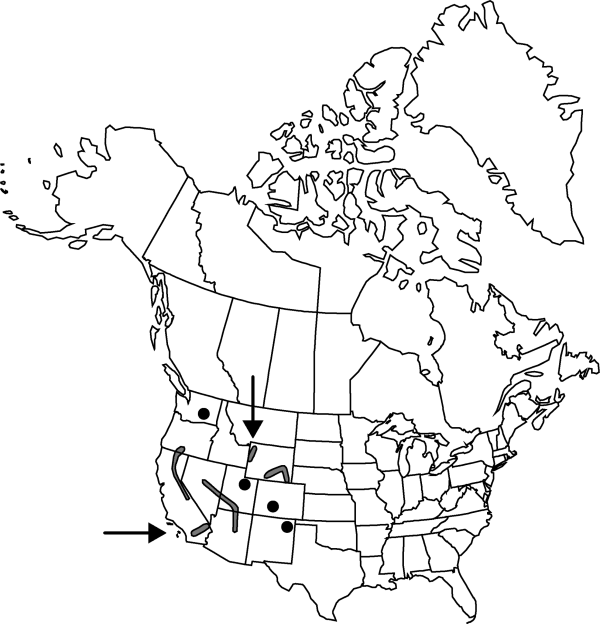Chenopodium hians
in N. L. Britton et al., N. Amer. Fl. 21: 16. 1916.
Stems erect, branched, 1–4.5(–8) dm, farinose; basal branches erect, often weak; distal branches erect or nearly so, sparse. Leaves nonaromatic; petiole 0.2–0.7 cm; blade elliptic-oblong or narrowly lanceolate, 3-veined, 1–2.5(–3) × 0.3–0.6(–0.8) cm, base cuneate, margins entire, apex acute to rounded, densely farinose abaxially. Inflorescences glomerules in lateral spikes or panicles, 5–7 cm; glomerules densely spaced, maturing irregularly; bracts leaflike. Flowers: perianth segments 5, distinct nearly to base; lobes elliptic, oblong, or narrowly ovate, 0.8–1 × 0.6–0.8 mm, apex rounded, slightly keeled, densely farinose, erect and exposing fruit at maturity; stamens 5; stigmas 2, 0.2 mm. Achenes ovoid; pericarp adherent, minutely tuberculate. Seeds round, 1–1.4 mm diam., margins rounded; seed coat black, rugulate. 2n = 18.
Phenology: Fruiting late summer–early fall.
Habitat: Open, dry or moist areas including prairies, pastures, sand hills, roadsides, lakeshores
Elevation: 500-3000 m
Distribution

Alta., B.C., Sask., Ariz., Calif., Colo., Nev., N.Mex., Oreg., Tex., Utah, Wash., Wyo.
Discussion
Selected References
None.